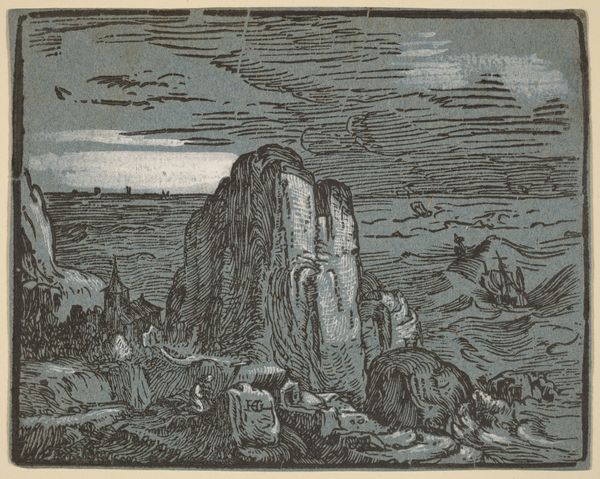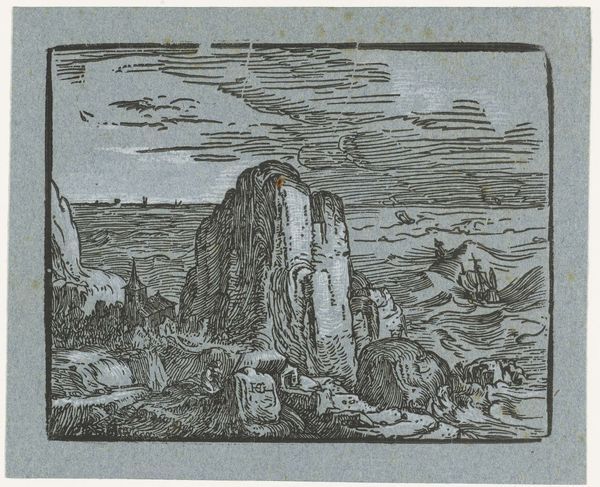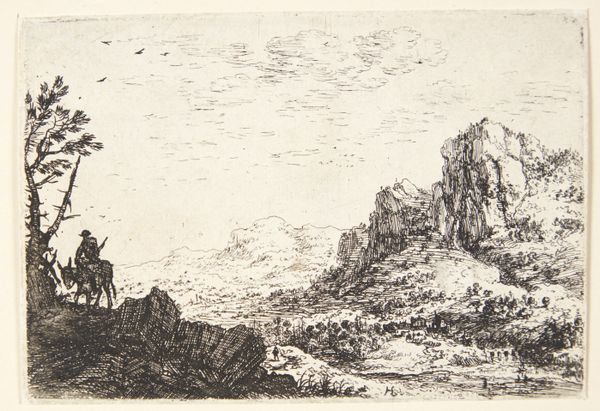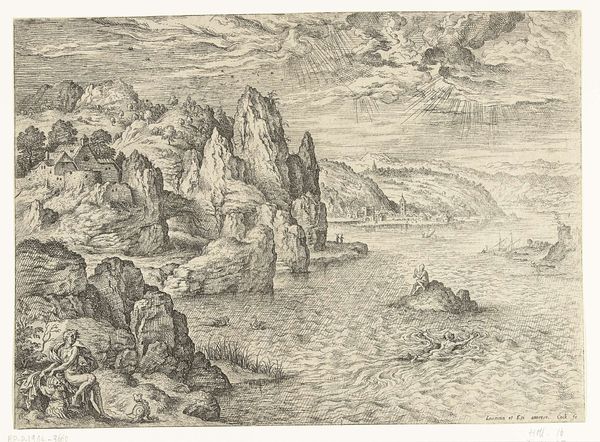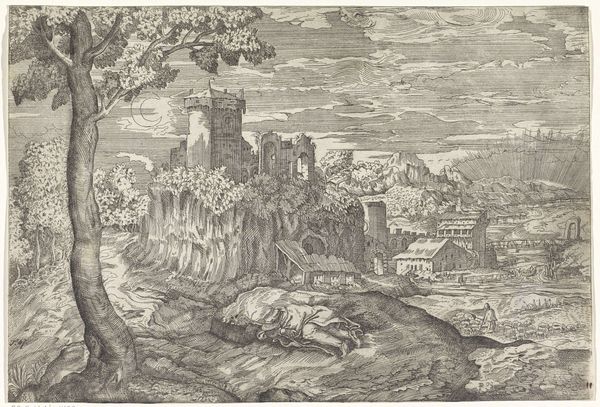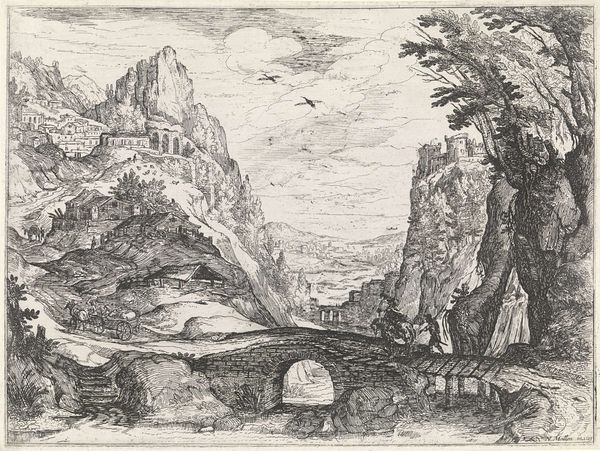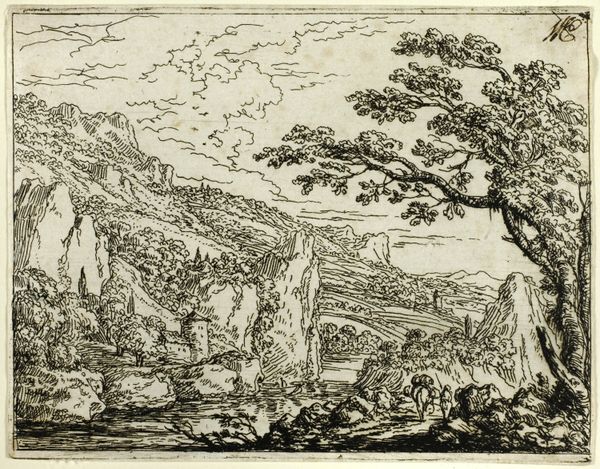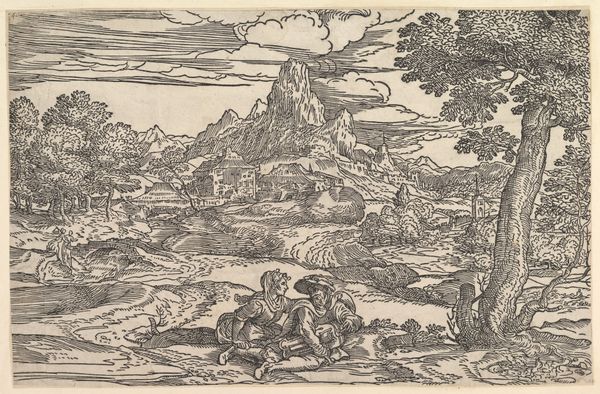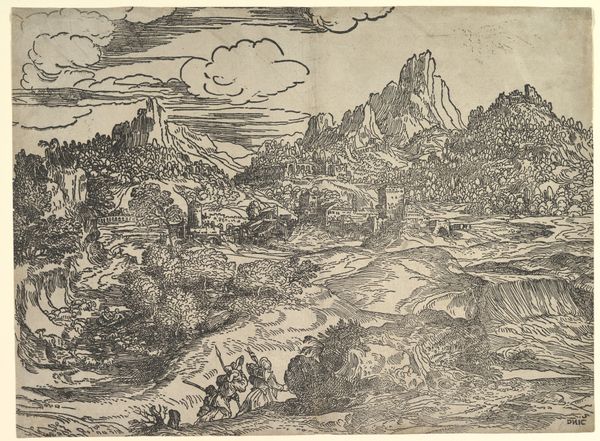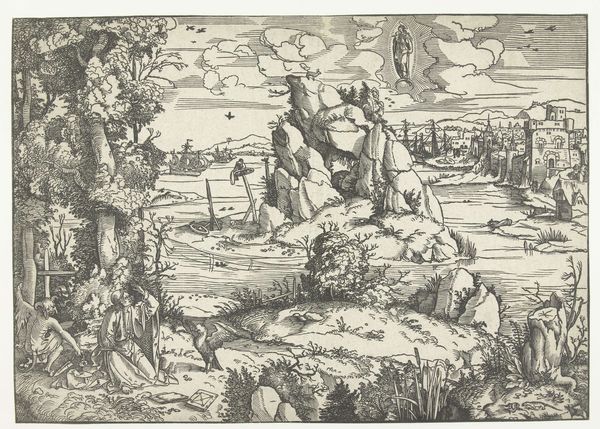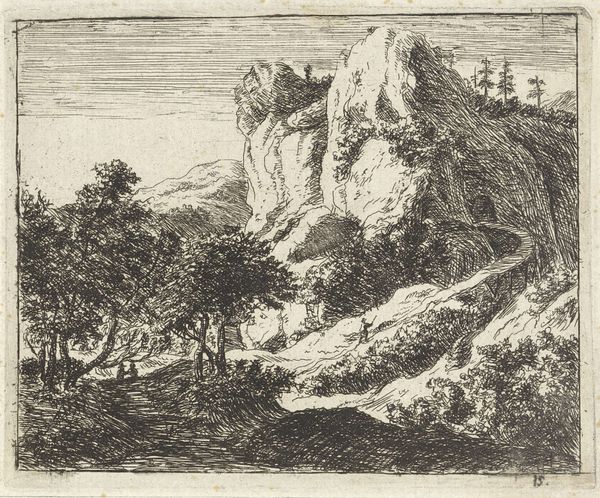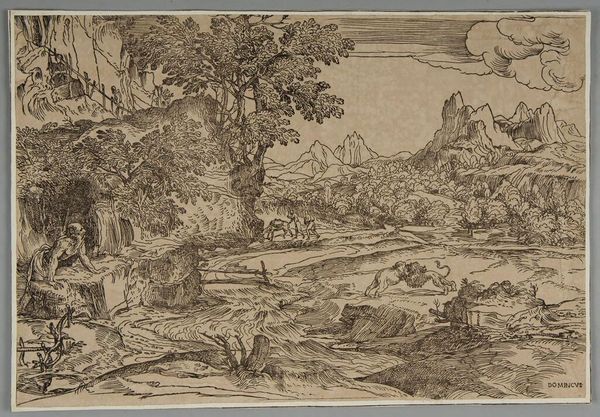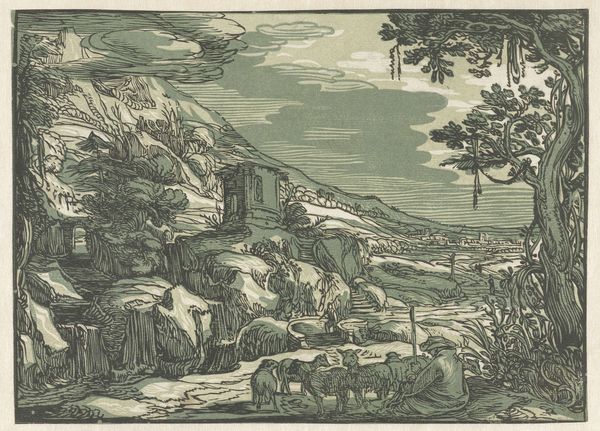
Cliff on a Seashore, from Four Small Landscapes Possibly 1597 - 1620
0:00
0:00
drawing, print, paper, woodcut
#
drawing
#
narrative-art
# print
#
landscape
#
paper
#
geometric
#
woodcut
#
northern-renaissance
Dimensions: 116 × 146 mm (image/plate/sheet)
Copyright: Public Domain
Curator: "Cliff on a Seashore," likely created between 1597 and 1620, is one of four small landscape woodcuts by Hendrick Goltzius currently residing here at the Art Institute of Chicago. Editor: There's a feeling of precariousness in this print, like the entire scene is on the verge of crumbling. The colors are muted, the waves feel rough, and even the geometric structure seems to struggle against the elements. It speaks to fragility and power. Curator: Goltzius was known for his skill in engraving, but these woodcuts are particularly interesting. Look at the way he uses line to create depth and texture. It reminds me of the symbol of the "ruin" as a vanitas theme-- where the power of time is displayed openly. Editor: I agree. The ruin motif certainly reflects the anxiety of impermanence. But beyond that, there's also the visual representation of nature’s indifferent strength. Note the lone ship battling the waves - the artist appears to be critiquing the futility of human ambition. Curator: Perhaps, but I see the ship as a symbol of resilience. Even the village at the base of the distant cliffs perseveres despite the harsh environment. In many Northern Renaissance landscapes, humanity and nature exist interdependently, both shaping and being shaped by the other. The mountain represents refuge but also challenge. Editor: And perhaps the church is also relevant: an important and recognizable refuge and symbol in times of instability and religious turmoil. I appreciate how this image lets the viewer contemplate both natural power and societal tensions. I wonder, what meanings were immediately extracted from it in the North as compared to today? Curator: That's precisely why these artworks continue to fascinate. They offer a lens through which we can re-examine the complex relationships between history, culture, and personal experience. Editor: A perspective from which the cyclical anxieties between human life and environment unfold over time, again and again.
Comments
No comments
Be the first to comment and join the conversation on the ultimate creative platform.
